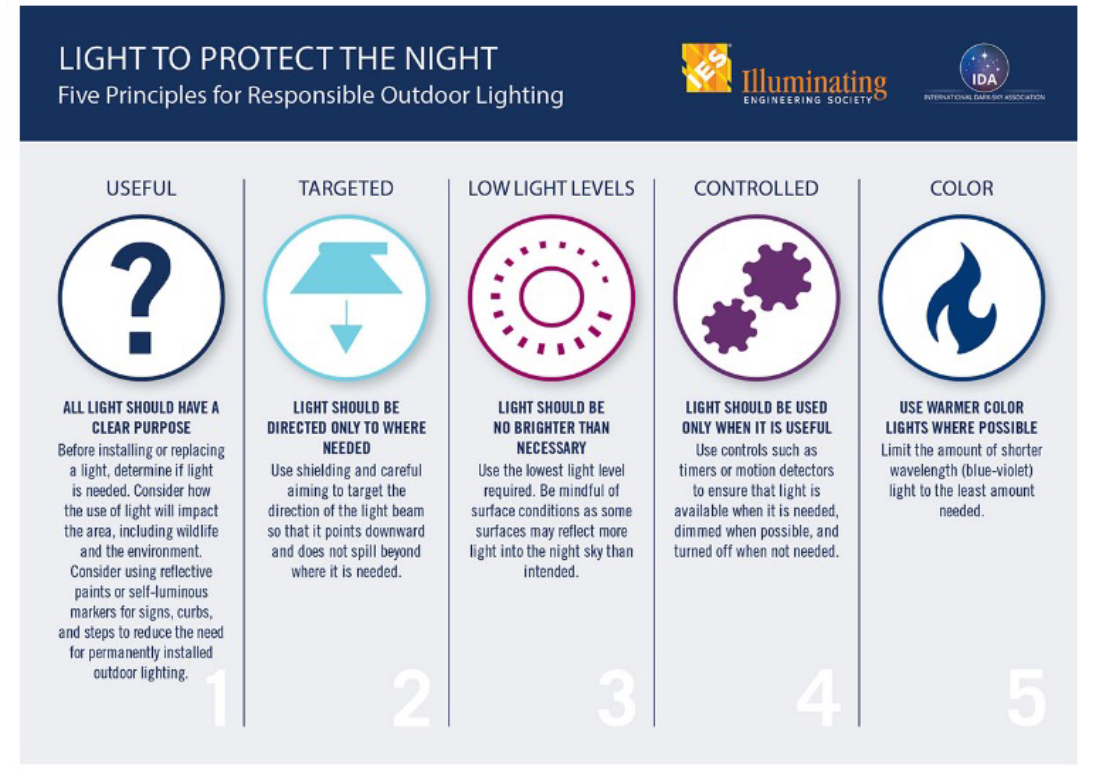Blog
DLC LUNA v1 & SSL v5.1
The Design Lights Consortium (DLC) introduced its LUNA v1 in 2021 to address the sky glow & light trespass and to mitigate light pollution issue. DLC LUNA v1 was designed to minimize light pollution while providing energy savings of outdoor solid-state lighting.
It was released after more than a year of research & development. LUNA is an additional set of requirements for a subset of products covered by the DLC’s Solid-State Lighting (SSL) Technical Requirements. The DLC began implementing its LUNA policy in 2022, and the first products listed under the LUNA qualification were added to the SSL Qualified Products List (QPL) on July 27, 2022.
The policy and LUNA listings are designed to streamline the process of selecting efficient outdoor lighting products that minimize sky glow and light trespass while yielding the efficiency and maintenance benefits of LED lighting.
In terms of best practices for limiting sky glow — one of the main objectives of LUNA generally point to a set of basic guidelines:
• Limit overlighting
• Limit uplight emitted by a luminaire.
• Impose a curfew, after which lights must be dimmed or switched off.
• Minimize short-wavelength light by implementing a maximum CCT or limiting short-wavelength radiation in another way.
What is light pollution?
Light pollution includes the following three components: sky glow, light trespass, and glare (see below)
 Sky Glow
Sky Glow
Is a result of light scattering in the atmosphere directly from light fixtures and from ground and object reflections. Ground surface reflectance values can reach 35% for asphalt and concrete; 25% for grass and tree foliage; and can vary between 5-80% for exterior building surfaces. Scattered and reflected light results in a sky glow that travels well beyond the illuminated site.
Light TrespassIs spill light that extends beyond a property boundary and may cause annoyance, loss of privacy, and other nuisance to people. It can also disrupt nocturnal rhythms of wildlife and plants.
GlareLight reaching the eye can produce different types of Glares, which can be uncomfortable or even dangerous.
There are three types of Glares:
• Disability glare is light scattering in the eyes that interferes with visibility.
• Discomfort glare is overly bright light that causes people to squint or avert their eyes (and may even cause pain).
• Nuisance glare is light that is distracting or unwanted (e.g., from a light shining in a window).
IDA-IES Five Principles for Responsible Outdoor Lighting
In 2020, the International Dark-Sky Association (IDA) and the Illuminating Engineering Society (IES) announced a strategic collaboration to address the global issue of light pollution that negatively affects our environment and the human condition.

The relationship between DLC LUNA v1 and DLC SSL v5.1.
The DLC describes the LUNA Technical Requirements v1 as complementing existing DLC SSL v5.1 requirements for outdoor lighting.
LUNA-qualified products must:
- Meet the existing DLC SSL v5.1 requirements for lighting efficiency and quality.
- Then must meet additional criteria that help limit light pollution such as sky glow and light trespass.
- Additionally, LUNA requires the use of warm white light – 2200K to 3000K CCT.
One Requirement to Rule Them AllRather than introduce a standard that competes with or conflicts with existing guidelines issued by other organizations, the DLC constructed the LUNA requirements so that qualifying luminaires will also comply with the IDA-IES Model Lighting Ordinance (MLO), a legislative template intended to save communities from having to reinvent the wheel when drawing up dark-sky ordinances. The MLO was jointly developed by the International Dark Skies Association (IDA) and the Illuminating Engineering Society (IES) in 2011 and was updated in 2020.
DLC LUNA v1 and ControlsDLC LUNA products must be dimming capable – in particular, continuously dimmable to 20% or less of maximum light output. To support dimming, each product is required to support at least one communication method for dimming: wired communication for a single control point, and/or communication between multiple control points.
EXCLUSIONS for DLC LUNA:For various reasons, several categories of outdoor products are currently excluded from the DLC LUNA requirement:
- Floodlights, replacement lamps and retrofit kits are excluded because these products are highly dependent on project design and installation, and efforts to mitigate light pollution must be addressed on a project-by-project basis.
- Luminaires for parking garages, stairwells/passageways and tunnels are not included because uplight is typically blocked and contained by the structure where the lighting is installed.
- Non-white light is out of scope for DLC LUNA’s initial release because standardized metrics are still in development. Because meeting the DLC LUNA requirements will decrease the efficacy of some products (such as bollards), the SSL QPL qualifying thresholds for these types of luminaires are being adjusted to compensate.
Fanlight is currently working on several LED fixtures to qualify under DLC LUNA specifications.

